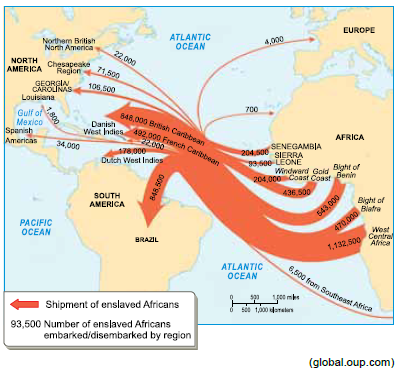Questões de Vestibular UNESP 2018 para Vestibular - Primeiro Semestre
Foram encontradas 90 questões
Leia o trecho do artigo de Jason Farago, publicado pelo jornal The New York Times, para responder às questões
She led Latin American Art in a bold new direction

In 1928, Tarsila do Amaral painted Abaporu, a landmark work of Brazilian Modernism, in which a nude figure, half-human and half-animal, looks down at his massive, swollen foot, several times the size of his head. Abaporu inspired Tarsila’s husband at the time, the poet Oswald de Andrade, to write his celebrated “Cannibal Manifesto,” which flayed Brazil’s belletrist writers and called for an embrace of local influences – in fact, for a devouring of them. The European stereotype of native Brazilians as cannibals would be reformatted as a cultural virtue. More than a social and literary reform movement, cannibalism would form the basis for a new Brazilian nationalism, in which, as de Andrade wrote, “we made Christ to be born in Bahia.”
The unconventional nudes of A Negra, a painting produced in 1923, and Abaporu unite in Tarsila’s final great painting, Antropofagia, a marriage of two figures that is also a marriage of Old World and New. The couple sit entangled, her breast drooping over his knee, their giant feet crossed one over the other, while, behind them, a banana leaf grows as large as a cactus. The sun, high above the primordial couple, is a wedge of lemon.
(Jason Farago. www.nytimes.com, 15.02.2018. Adaptado.)
Leia o trecho do artigo de Jason Farago, publicado pelo jornal The New York Times, para responder às questões
She led Latin American Art in a bold new direction

In 1928, Tarsila do Amaral painted Abaporu, a landmark work of Brazilian Modernism, in which a nude figure, half-human and half-animal, looks down at his massive, swollen foot, several times the size of his head. Abaporu inspired Tarsila’s husband at the time, the poet Oswald de Andrade, to write his celebrated “Cannibal Manifesto,” which flayed Brazil’s belletrist writers and called for an embrace of local influences – in fact, for a devouring of them. The European stereotype of native Brazilians as cannibals would be reformatted as a cultural virtue. More than a social and literary reform movement, cannibalism would form the basis for a new Brazilian nationalism, in which, as de Andrade wrote, “we made Christ to be born in Bahia.”
The unconventional nudes of A Negra, a painting produced in 1923, and Abaporu unite in Tarsila’s final great painting, Antropofagia, a marriage of two figures that is also a marriage of Old World and New. The couple sit entangled, her breast drooping over his knee, their giant feet crossed one over the other, while, behind them, a banana leaf grows as large as a cactus. The sun, high above the primordial couple, is a wedge of lemon.
(Jason Farago. www.nytimes.com, 15.02.2018. Adaptado.)

Based on the information presented by the map, one can say that, from 1731 to 1775,
Leia o texto para responder às questões
Prescriptions for fighting epidemics

Epidemics have plagued humanity since the dawn of
settled life. Yet, success in conquering them remains patchy.
Experts predict that a global one that could kill more than 300
million people would come round in the next 20 to 40 years.
What pathogen would cause it is anybody’s guess. Chances
are that it will be a virus that lurks in birds or mammals, or
one that that has not yet hatched. The scariest are both highly
lethal and spread easily among humans. Thankfully, bugs that
excel at the first tend to be weak at the other. But mutations
– ordinary business for germs – can change that in a blink.
Moreover, when humans get too close to beasts, either
wild or packed in farms, an animal disease can become a
human one.
A front-runner for global pandemics is the seasonal
influenza virus, which mutates so much that a vaccine must
be custom-made every year. The Spanish flu pandemic of
1918, which killed 50 million to 100 million people, was a
potent version of the “swine flu” that emerged in 2009. The
H5N1 “avian flu” strain, deadly in 60% of cases, came about
in the 1990s when a virus that sickened birds made the jump
to a human. Ebola, HIV and Zika took a similar route.
(www.economist.com, 08.02.2018. Adaptado.)
Leia o texto para responder às questões
Prescriptions for fighting epidemics

Epidemics have plagued humanity since the dawn of
settled life. Yet, success in conquering them remains patchy.
Experts predict that a global one that could kill more than 300
million people would come round in the next 20 to 40 years.
What pathogen would cause it is anybody’s guess. Chances
are that it will be a virus that lurks in birds or mammals, or
one that that has not yet hatched. The scariest are both highly
lethal and spread easily among humans. Thankfully, bugs that
excel at the first tend to be weak at the other. But mutations
– ordinary business for germs – can change that in a blink.
Moreover, when humans get too close to beasts, either
wild or packed in farms, an animal disease can become a
human one.
A front-runner for global pandemics is the seasonal
influenza virus, which mutates so much that a vaccine must
be custom-made every year. The Spanish flu pandemic of
1918, which killed 50 million to 100 million people, was a
potent version of the “swine flu” that emerged in 2009. The
H5N1 “avian flu” strain, deadly in 60% of cases, came about
in the 1990s when a virus that sickened birds made the jump
to a human. Ebola, HIV and Zika took a similar route.
(www.economist.com, 08.02.2018. Adaptado.)